Making rice flour is an easy and cost-effective way to add flavor and texture to your favorite recipes. The process of making rice flour at home is simple, requiring only a few basic kitchen items.
And having rice flour on hand at home can save you mega money in the long run. We all know how expensive gluten free baking (and living a gluten free lifestyle in general) can be, so why not save some money and make your own sweet rice flour at home.
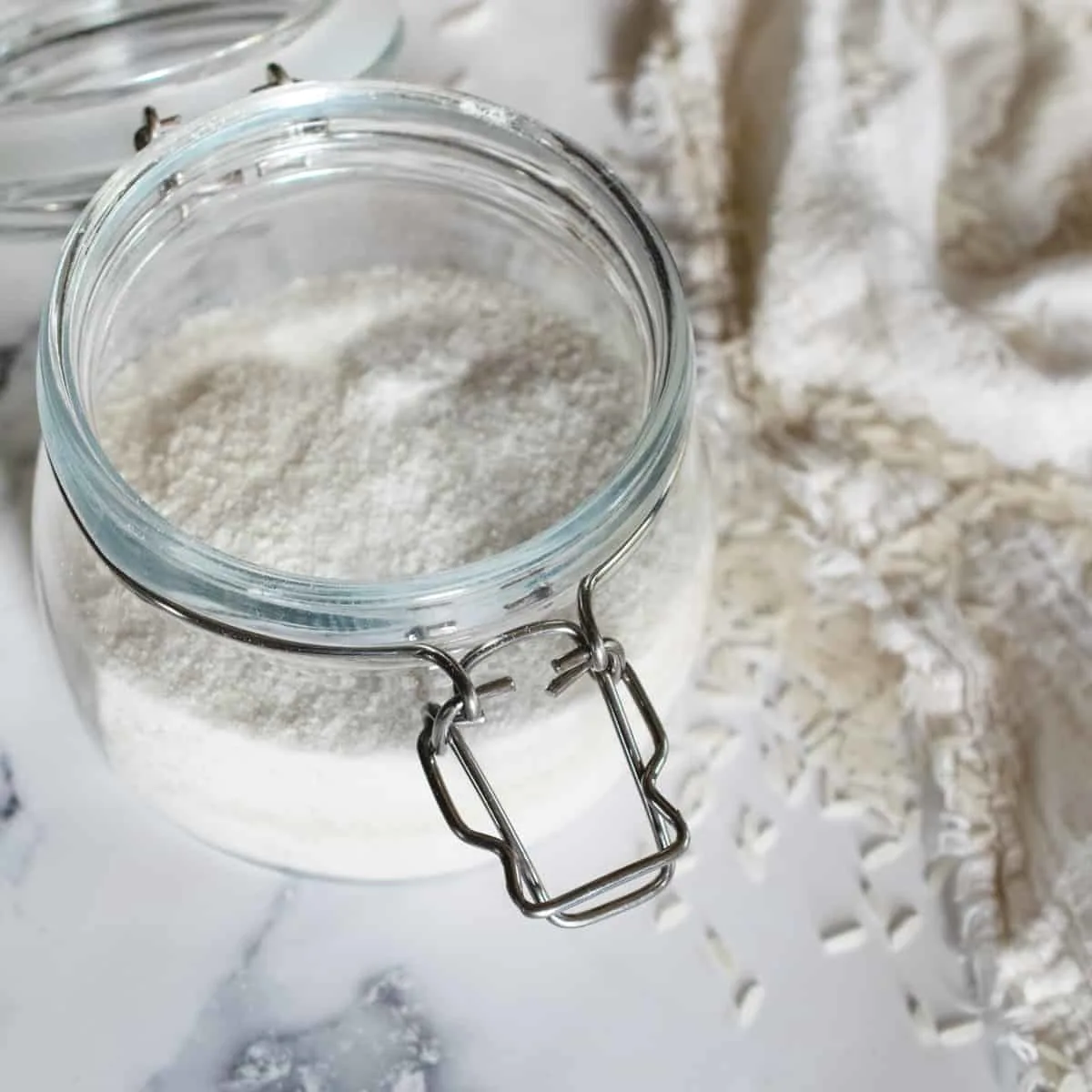
My favorite use for rice flour is in making crispy, fried and breaded items Like General Tso's Chicken (that doesn't get soggy!) or homemade Onion Rings extra crispy.
Rice flour is also used widely in gluten free baking, or as a substitute for gluten free flour in a pinch.
Rice flour is perfect for making light, air and crisp textures such as delectable homemade Graham Crackers.
Gluten free flours can be less than ideal to purchase on a budget. Luckily, they can be made very easily using just the one ingredient.
Combine homemade rice flour with other gluten free flours, like oat flour, for homemade gluten free flour.
What is rice flour?
Rice flour is a versatile gluten free flour made from ground rice. It can be used for many applications, from breading to baking. Rice flour is also much more affordable than most gluten-free flours as it only requires one ingredient and can easily be made at home by grinding raw or parboiled rice in a food processor or blender.
Rice flour has a very mild flavor, so it pairs well with other ingredients and doesn't overpower dishes with its taste.
This is a great gluten-free flour to use for those with celiac disease or those with gluten sensitivity and can be used in place of traditional wheat flour in many recipes.
Why You'll Love Making Your Own Rice Flour
- When you make your own rice flour, you can make it as fine or as coarse as you prefer
- You only need a few tools to make your own homemade gluten free flour
- It only takes a few minutes to make
- It's a versatile flour that can be used in a variety of your favorite gluten free recipes
Ingredients Needed
All you need are a few cups of long grain white rice.
What tools you will need:
- A high powered blender, food processor or bullet style blender (like a Nutri Bullet for example, among others)
- A sifter or mesh strainer to sift out any lumps
How to Make Rice Flour
Make the rice flour in batches of 1 cup of rice.
Pour rice grains in to the blender or processor.
Pulse a few times to get the grains broken up. Then run the blender on full power for 30-60 seconds until you've achieved a fine powder.
If the powder gets hot (from friction) allow it to cool for a few minutes before running again.
Feel the rice flour between your fingers, and if it the powder feels gritty, blend longer.
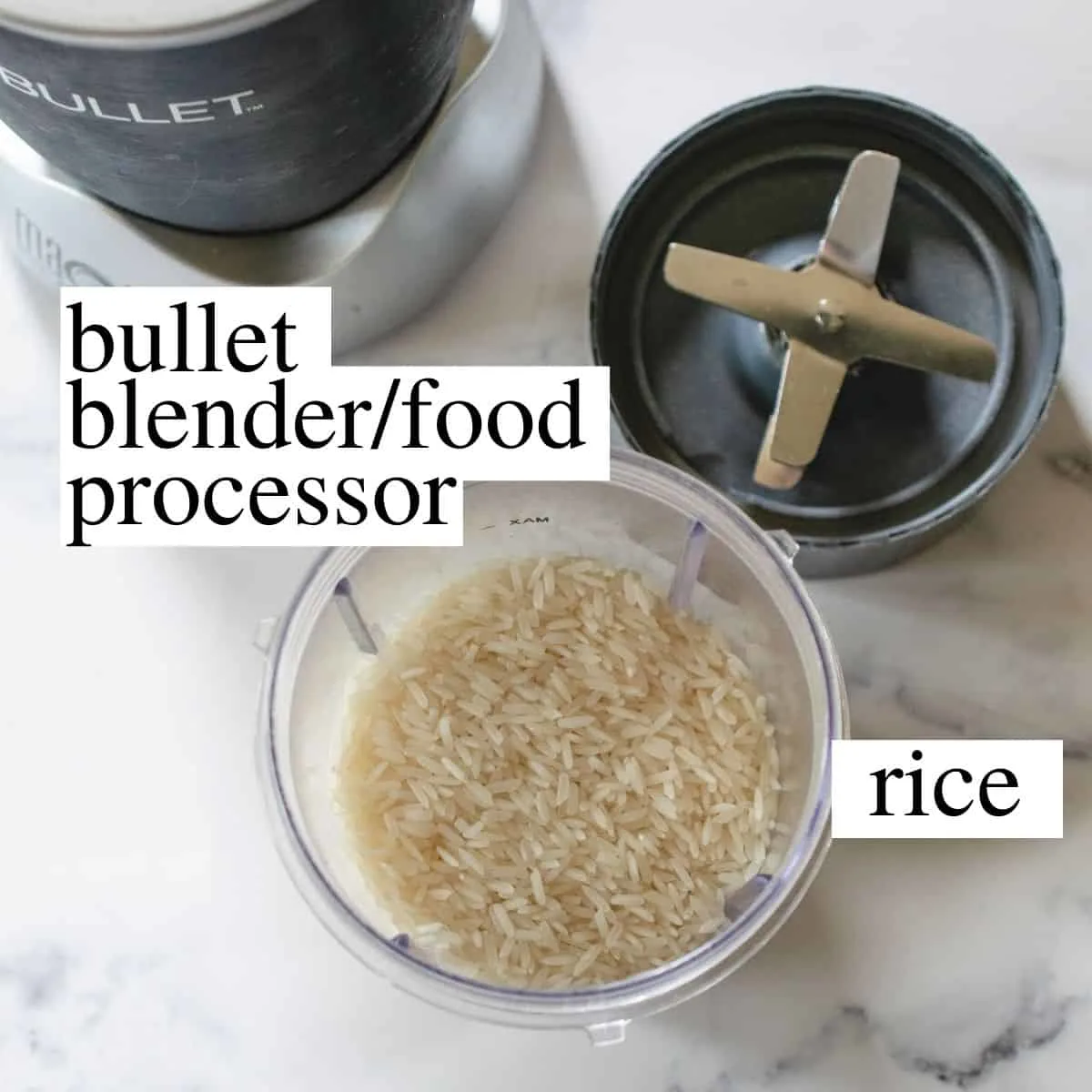
Once the consistency of the rice flour feels uniformly fine between the fingers, pass it through a mesh strainer or sifter.
This is for good measure, to remove any hard pieces of rice that would otherwise be detectable in your recipes.
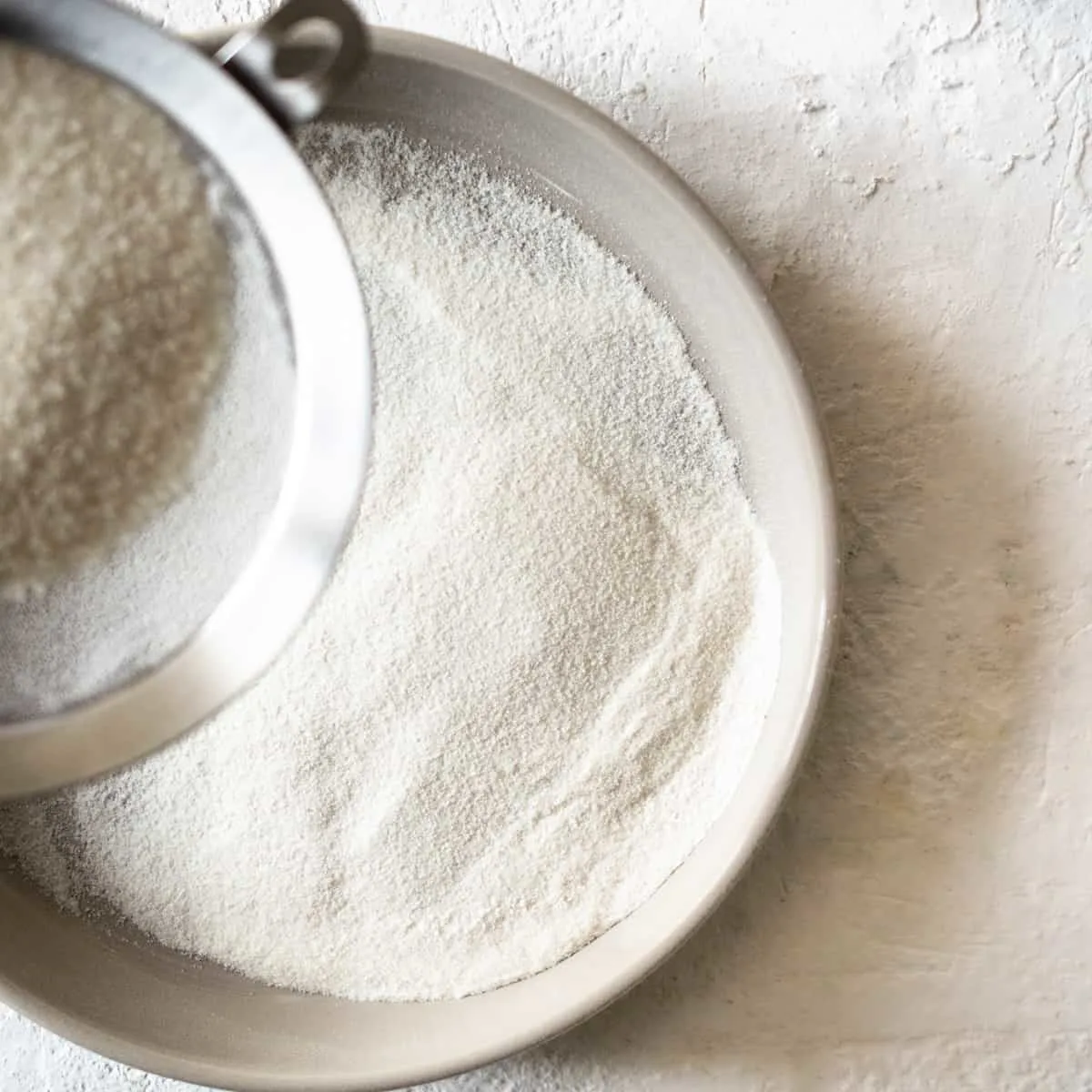
Storage
The finished rice flour can be stored in the pantry for at least one year. (Brown rice flour is usually safe to store for 6 months.)
What should I store homemade rice flour in?
Homemade rice flour can be stored in an airtight container. This helps to prevent moisture and contamination from entering the container or stale air from leaving it. Mason jars, Tupperware containers, or resealable plastic bags are all great for storing rice flour.
If you use a plastic bag, place it in a large bowl before filling with the flour to prevent spills and messes. Make sure that whatever container you use, it's made out of an odor-resistant material as the flour can absorb odors over time.
What Kind of Rice to Use
Short grain- Short grain rice, like Arborio, tend to be "stickier" when cooked, making them perfect for sushi and risotto. When made into flour, this rice flour is best for recipes like Asian dumplings.
Medium grain- Medium grain rice varieties, are a popular variety of all purpose rice that works for just about anything, including homemade rice flour.
Extra long grain- Long grain rice, like basmati, has a thin, long grain and the lowest starch content, making it the least sticky.
Brown rice- Brown rice flour can be substituted for white rice flour for added health benefits, in just about every recipe that calls for rice flour.
Keep in mind that the taste will be slightly nutty, and the texture can be coarse if not fully blended into a powder.
FAQ's
Rice flour can be used in gluten free baking, crispy breading or coatings for deep fried foods, Asian dumplings and noodles, and as a gluten free thickener for soups and stews.
No. Rice powder is much coarser, and doesn't dissolve easily in water like rice flour.
Substitute rice flour for all purpose flour directly using the same measurements but add ½ teaspoon of xanthan gum per 1 cup of rice flour in baked goods.
In general, white rice flour lasts for a minimum of 1 year in the pantry, while brown rice flour will last for up to 6 months.
Yes, rice flour should be stored at room temperature in a sealed container to ensure maximum freshness. It is best kept away from sources of heat and moisture. For long-term storage, place it in the refrigerator or freezer. Be sure to use an airtight container and label with the date so you can easily keep track of when it expires.
Yes, you should always wash the rice before using it to make rice flour. This helps to remove any dirt or debris that might be clinging to the grains, as well as any insect eggs that may be present. Washing your rice also gets rid of excess starch which can affect the quality and texture of the finished product.
To properly wash your rice, place it in a sieve and run cold water over it for several minutes.
Once you feel you've thoroughly rinsed all of the rice, drain it and then spread it out on a kitchen towel to dry before grinding or milling into flour.
For grinding rice into flour, you can use either a hand-cranked grinder, a food processor, or a high-speed blender.
A hand-cranked grinder is the most common and requires some manual effort to turn the handle, but you'll get a more uniform consistency with this method than with an electric machine.
A food processor can grind the rice into finer particles than a hand-cranked grinder, but might require multiple passes to achieve the desired texture.
Lastly, a blender will work in a pinch if you don't have access to one of the other two options, but this method takes more time and effort as it doesn't grind as finely as the other two methods.
Yes, you can use a grain mill to make rice flour. Grain mills are more powerful than hand-cranked grinders and food processors and can grind the rice down to an even finer texture.
However, it is important to note that some grain mills require special attachments to be used with rice and other small grains.
Additionally, unlike blenders, grain mills require manual effort to turn the handle, so you may need to spend more time grinding the rice if using this method.
No, you do not need to mix your rice flour with another gluten free flour to use it. Rice flour is a great single-ingredient gluten free replacement for wheat flour in many recipes.
You may also use it in combination with other gluten-free flours, such as almond or coconut flour, to create a more complex texture and flavor since this rice flour is a very fine powder.
Additionally, because it does not contain any gluten, you don't have to worry about adding too much of it to your recipe and making the texture too heavy.
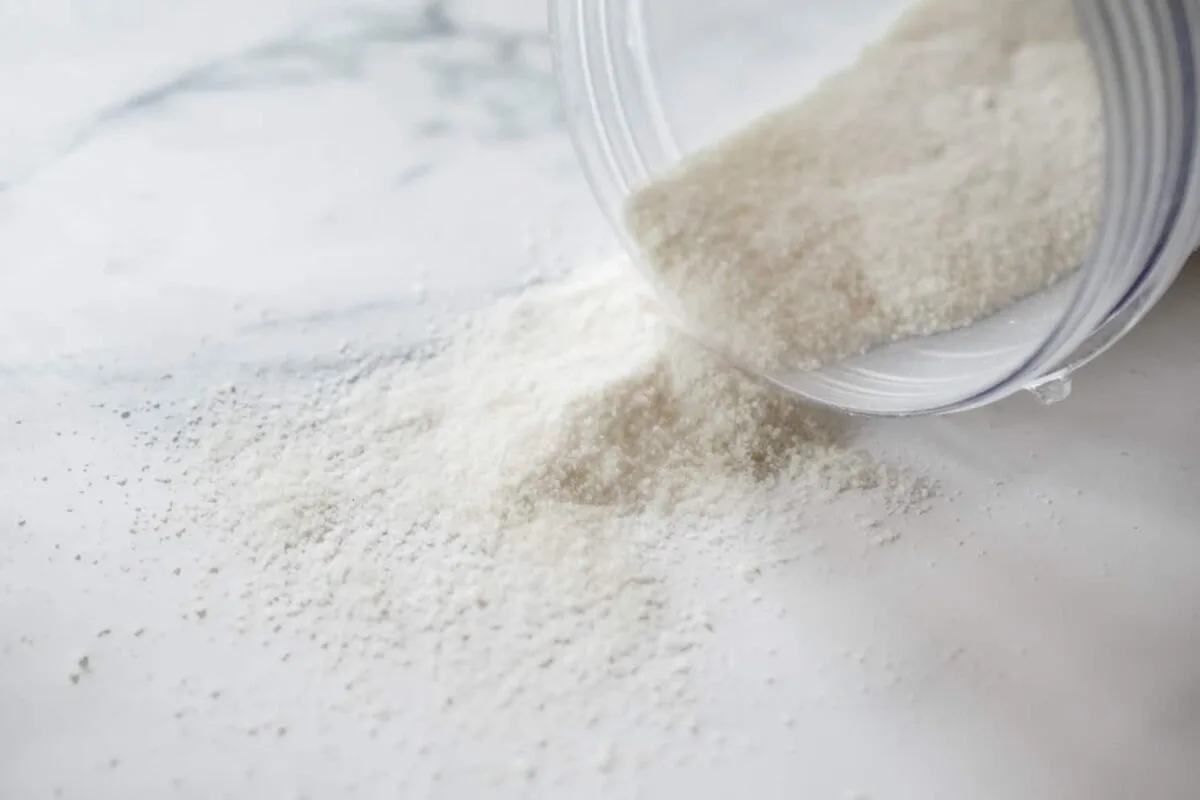
Tips for Making Your Own Flour
- Start with using the right type of rice. Use long grain white or brown rice for the best results.
- Make sure to use a high-powered blender or food processor and process the rice until it forms a fine powder, not course grains.
- You can also grind the rice in a coffee grinder, but make sure to only run it for short bursts at a time so as not to overheat the grinder.
- Use a sieve or cheesecloth to filter out any large chunks of rice that may remain in your flour after grinding.
- Depending on what you're using your gluten free flour for, you may need to mix in some xanthan gum before baking, as this helps bind everything together and keeps your baking from becoming crumbly.
What is a good store-bought rice flour?
If you don't want to make your own all purpose gluten free rice flour, you can buy some to use in your delicious recipes.
One of the most popular store-bought rice flour brands is Bob’s Red Mill. Bob’s Red Mill offers a variety of different types of rice flours, from traditional white and brown long grain varieties to sweet rice flour and sticky rice flour.
Their gluten free all-purpose flour blend also contains brown rice flour as one of its main ingredients.
For those looking for something a bit closer to home, many local health food stores and specialty grocers offer their own brands of organic, gluten-free rice flours.
Making and using your own rice flour is a good option for those who have food allergies or are gluten intolerant. It can be used in different ways and is super easy to make even if you just need small amounts. It can be used by itself or can be mixed with other types of flour to create the perfect gluten free flour blend.
Related Recipes
📖 Recipe
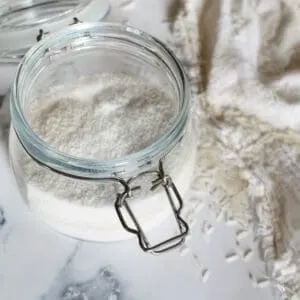
Rice Flour
Equipment
- high powered blender (like a Nutri Bullet, Vitamix or Ninja), food processor, or grain mill
- Sifter or fine mesh strainer
Ingredients
- 1-2 cups long grain white rice can use other varieties, see recipe notes
Instructions
- Measure dry rice (1 cup) into high powered blender, food processor, or food mill.
- Pulse a few times to break up the grains of rice, and then run on high speed until powder forms (about 1 minute) that is fine and not gritty when felt between the fingers. If you have to do this a second time, for an additional minute, let the rice flour cool down for a minute if it feels hot to the touch.
- Repeat with additional rice, if desired, in one cup increments.
- Tap the rice flour through a mesh strainer to remove any hard pieces of rice that did not become powdered.
- Store in a cool pantry in a closed container for 1 year to several years (for white rice flour) or 3-6 months (for brown rice flour).
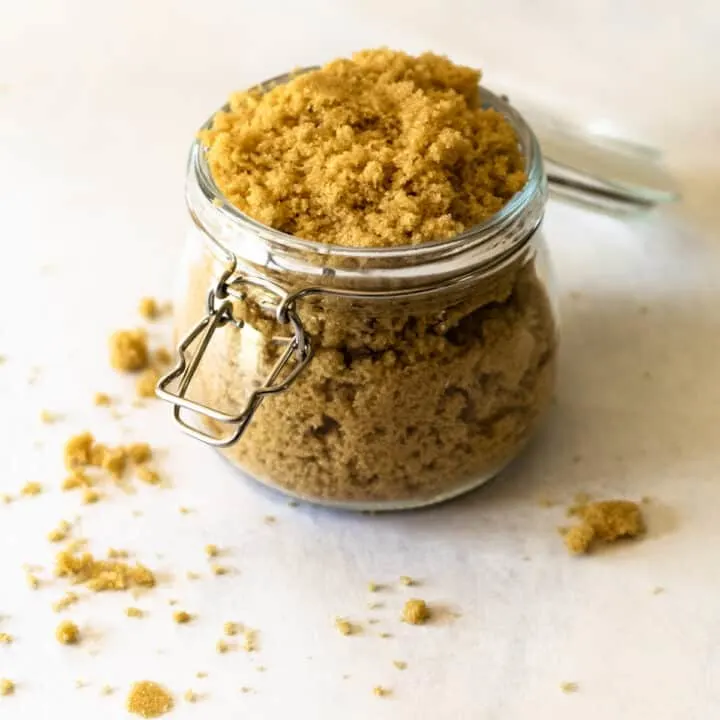
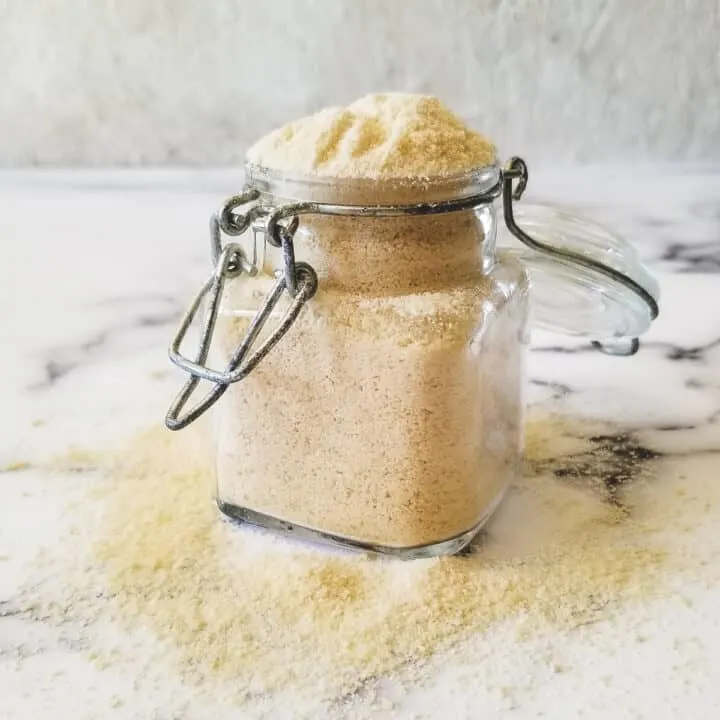
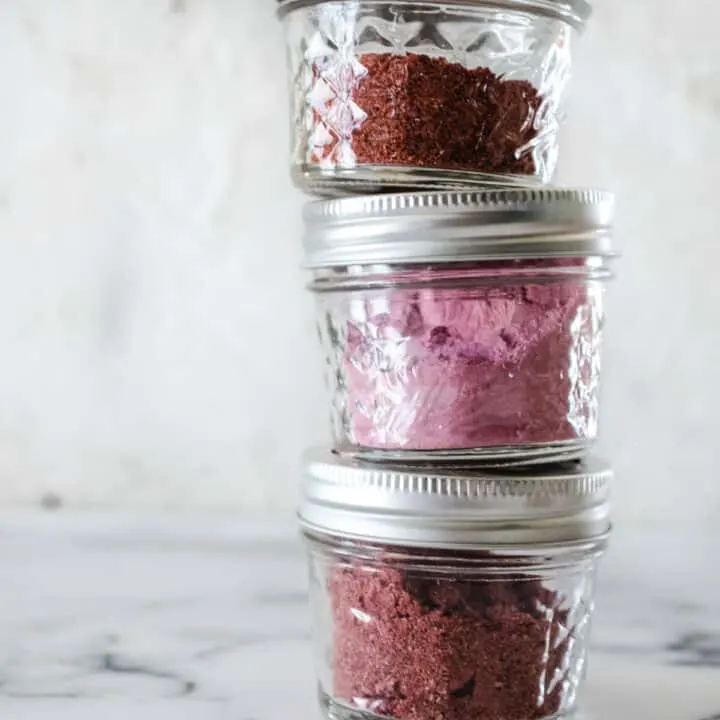
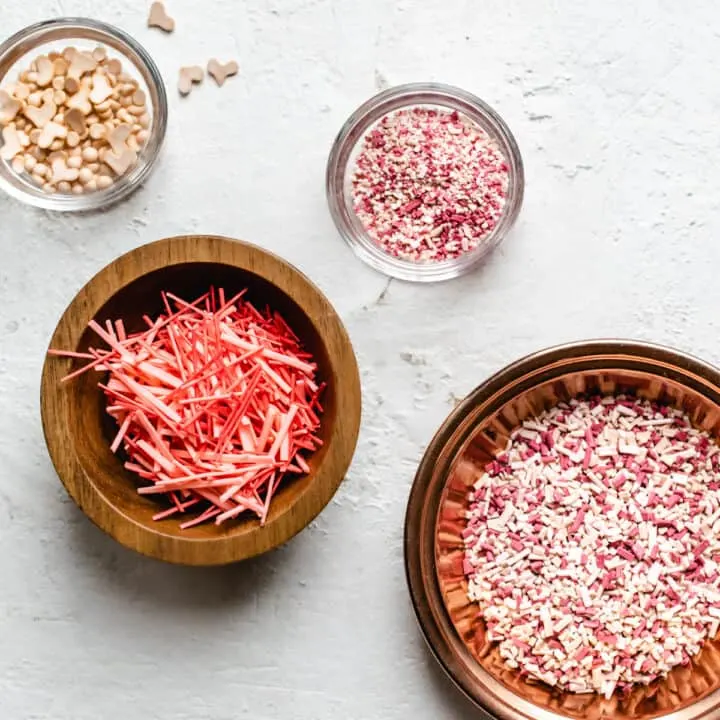
C
Wednesday 26th of May 2021
Great! Clearly written & straightforward directions - thank you. I will definitely be attempting this in the next few days. 👍
I will gripe, however, at this recipes cuisine labelling as "American", while it has more likely been a staple of widespread Asian culinary arts *long* before the inception of modern America. Prior to relatively recent European influences on the continent, and the associated trade networks from that uninvited occupancy, it would stand to reason that corn or other natively growing grains, not rice, were predominantly produced for flour? I'm not a horticultural historian, but it does slightly rankle that anything that could be replicated in America is labelled "American"...
Erin
Thursday 27th of May 2021
Hi! Thanks for your comment! It's actually just a "catch-all" cuisine label and has more to do either surfacing the diy recipe for voice search. I totally understand what you're saying, however this recipe is also typically served up due to searches geared towards gluten free flour making, but I did want to expand the content to remind people of other ways you could use this flour such as the deep fried recipes I've linked at the bottom, in addition to Asian dumplings.